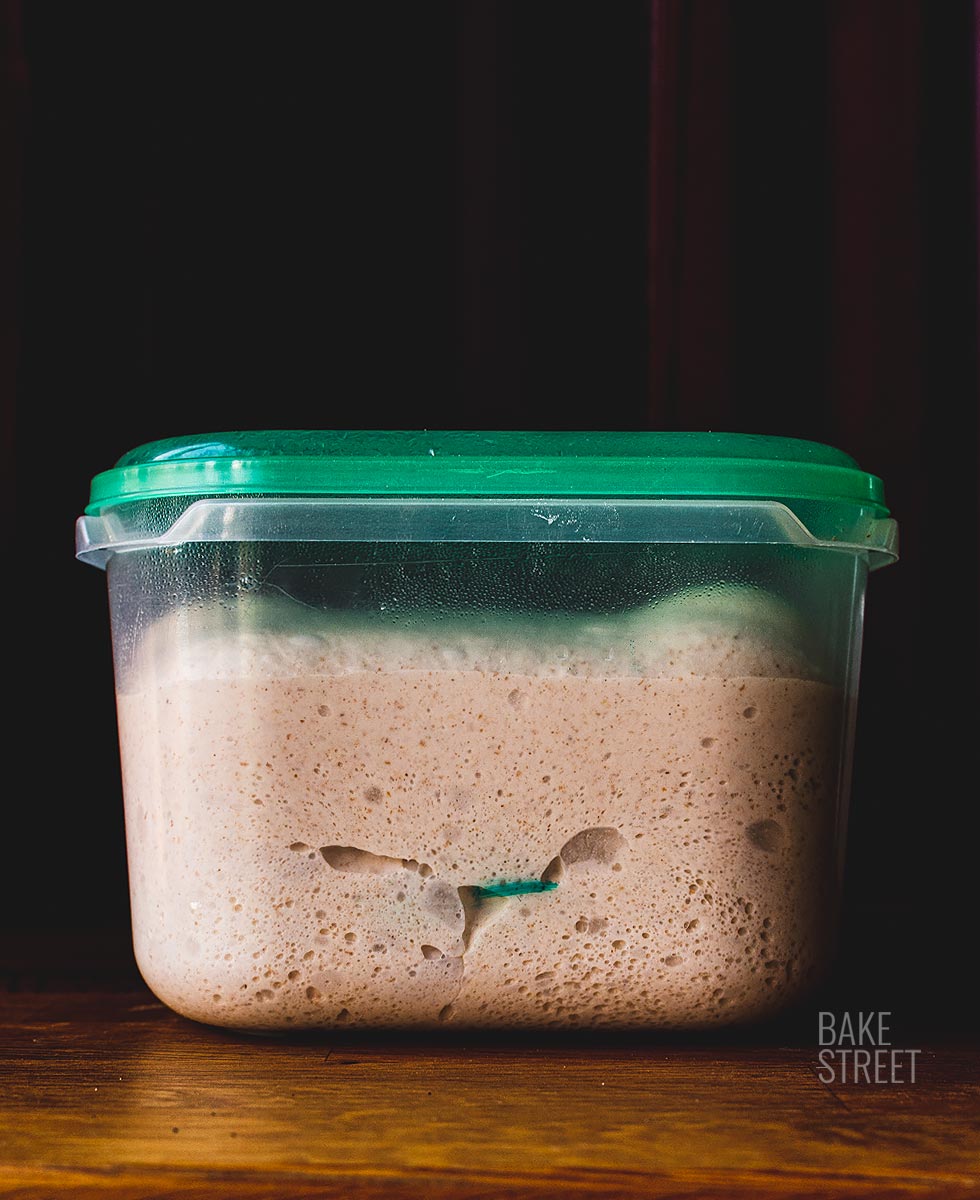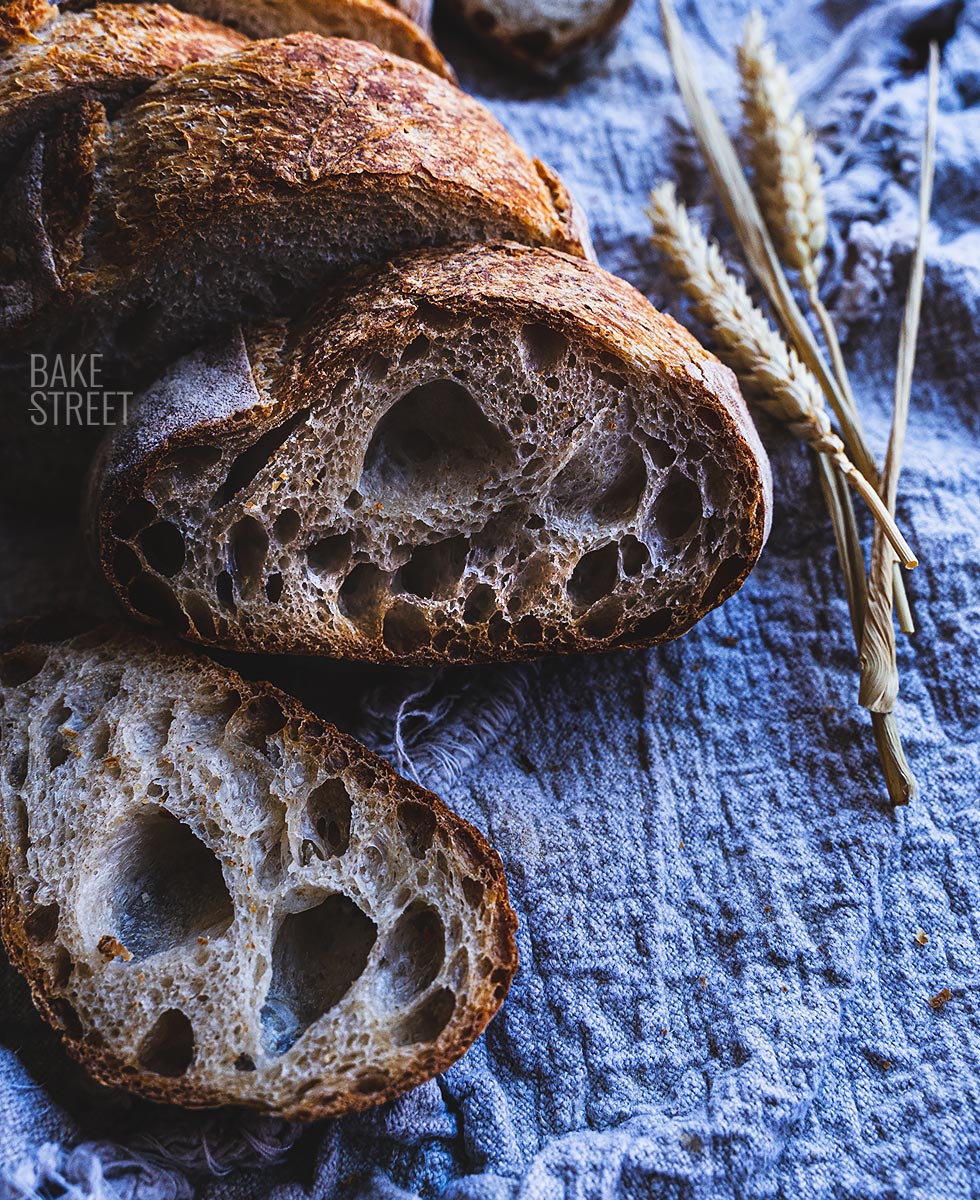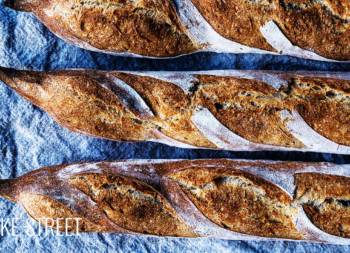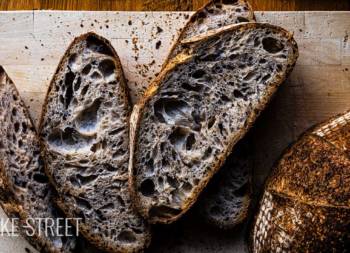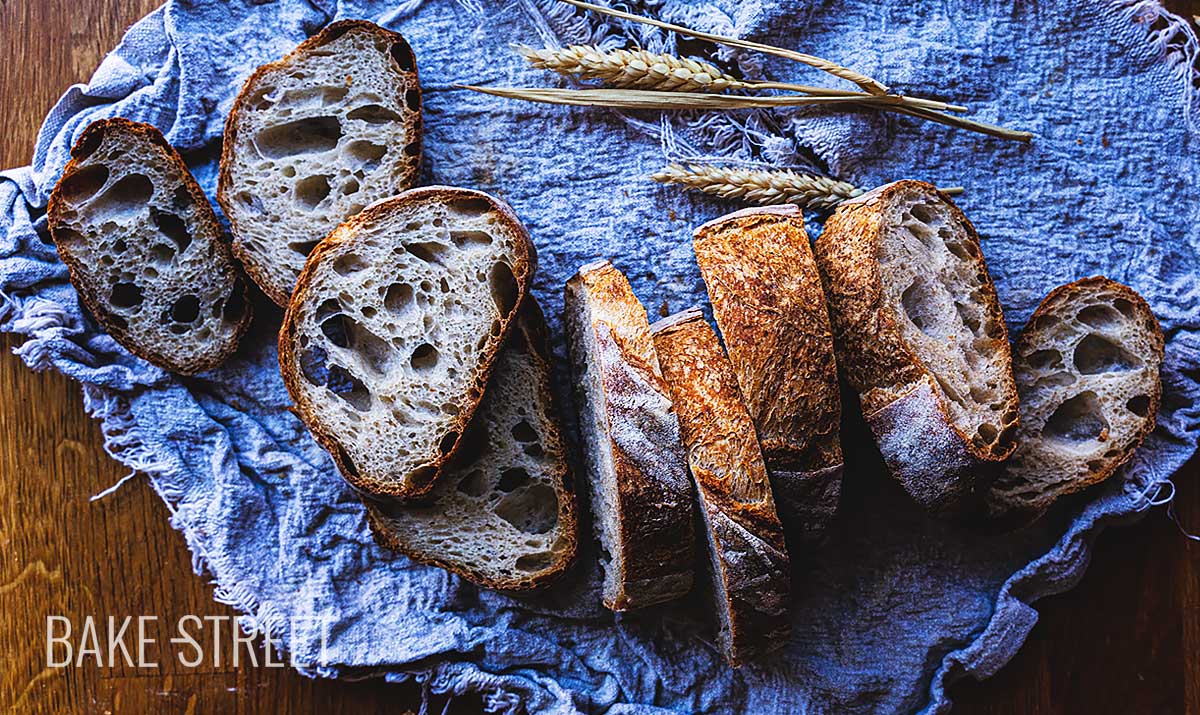
How to make bread with old dough
I’ve been testing for a few days now the last preferment I taught you how to make, the pâte fermentée. And I have to say that I’m very happy with the results I’m getting. That’s why, after doing several tests, I want to share with you How to make bread with old dough.
I know there’s nothing comparable to making bread with sourdough… maybe yes? It is true that a bread made with sourdough is much healthier than one made with yeast, it has a longer shelf life, its aromas and flavors are almost unattainable compared to other methods… But, know also that we can make a bread with old dough and obtain a result not only super aromatic and with good flavor, but also, a bread that is conserved in perfect state during 2 days. Maybe something else, but I didn’t have time to check it out…

Before continuing I want to thank Esmeralda since she is a constant source of inspiration for me. A few days ago she published some breads made with old dough and a pinch of yeast, and I must say that I fell in love with them. I really liked the result she got and I wanted to try it out. Besides, I had pâte fermentée in the fridge of the Pain Brié that I had made a few days ago.
So I decided to follow her process by following the percentage of old dough and yeast used, as well as the method to ferment them. Retarding in bulk fermentation and fermented on linen in final proof.
What is the old dough?
The old dough, as we usually know it, is the same as the pâte fermentée. It is a portion of dough from the last bread. That’s why, as I told you in the Pain Brié post, it’s the only preferment that contains salt.
Is it necessary to make bread dough to take a portion and reserve it as old dough?
No, not at all. We can make that dough to use it specifically as a preferment. What we will have to do is to let it rise, depending on the outside temperature it will do so before or after, and refrigerate it until the time of use.
How long does the old dough stay refrigerated?
Here the first thing to consider is the type of flour we use to make that old dough. We must bear in mind that the lower the percentage of protein or its strength, the less time the dough will be kept refrigerated.
Why? Because the yeast needs to be fed and, despite doing so at a slower rate at 39ºF/4°C, it will continue to do so. In addition, acidity will develop in the dough and this will weaken the gluten.
So an old dough made with a strong flour will last longer than one made with a weak flour or a wholemeal flour, for example.
Another point to consider is the amount of yeast we add to that preferment. The more we add, the faster it will rise, but it will also degrade sooner.
Why? Because it is not the same to distribute a family pizza among 4 people as it is among 20. As there are more yeasts, they take much less time to feed (amount of flour + water) than if there were less of them. They touch more and last longer.
They seem to be two very obvious concepts, but I assure you that they are just two of those that are not usually taken into account and, many times, they can give you problems because you “ask for more” than they can give.
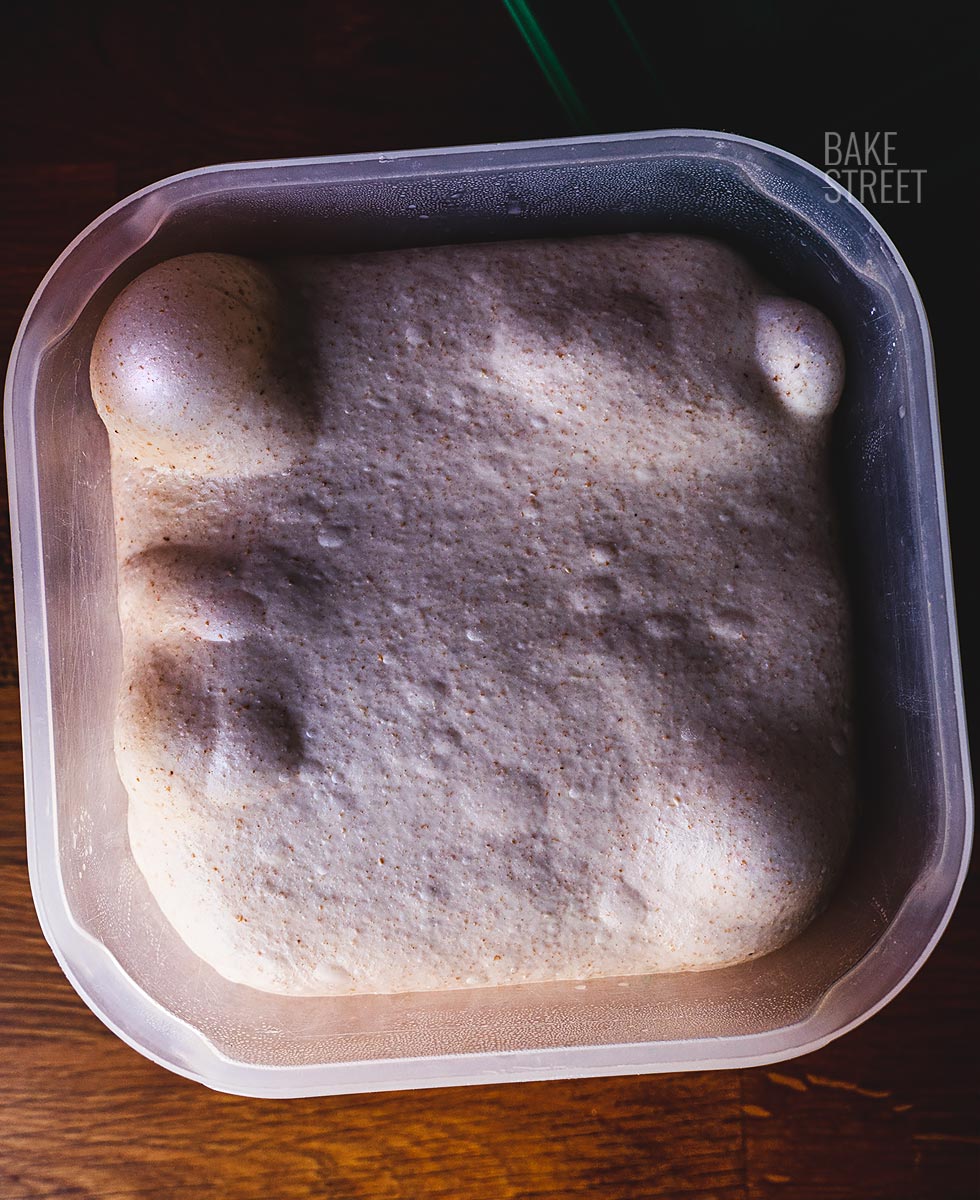
Can I freeze the old dough?
Yes, of course. In fact this is something I usually do a lot, but with croissant dough or Danish dough leftovers. I never throw them away. I wrap them up really well in film, put them in a zip-lock bag and freeze them. The reason I freeze these leftovers is because 90% of the time they’re made from sourdough.
I don’t usually leave them for more than three months…
The use of this pâte fermentée viennoise is usually to make croissant dough, brioche (like this brioche couronne) or any kind of dough.
How much old dough should I add to a bread dough?
An old dough is a preferment, that is, a dough that has already undergone a first (bulk) fermentation. The same as the sourdough only that instead of fermenting it with a “natural process” in which we have cultivated a “battlefield” full of bacteria and yeast, we directly add a small amount of yeast to make this step take place.
So when we add the amount we want to use, we have to take into account the time we want it to take for the yeast to rise, but also the results we want to achieve. In my case, I have added 20% of old dough in relation to the final weight of the flour, but in addition, I have added 0.36% of dry yeast to reinforce the preferment.
I had doubts as to whether the preferment alone would be enough to raise the bread, in case it wasn’t too strong, but I can tell you now that it would have been. I made other doughs in which I did not add any yeast and the result was very good. It is for that reason that the type of flour used as well as the amount of yeast added in the preferment (old dough) will condition its shelf life.
How do I convert a dough made with yeast and use a preferment instead?
This, without a doubt, is one of the questions that you ask me the most. Can I make a yeast bread with sourdough? And how do I change the percentage so that I can substitute one for the other? And vice versa, can a sourdough bread be made with yeast?
I know that this bread is not made with yeast, but it is made with a preferment. So I can clearly show you how to change one with another so that you can apply it to any dough that comes your way.
When we have a recipe for bread made with yeast and we want to convert it to a bread with preferment or sourdough the first thing we have to take into account is the amount of that preferment that we are going to add. When making bread, it is usual to use 20-30% of the final weight of flour used in the recipe.
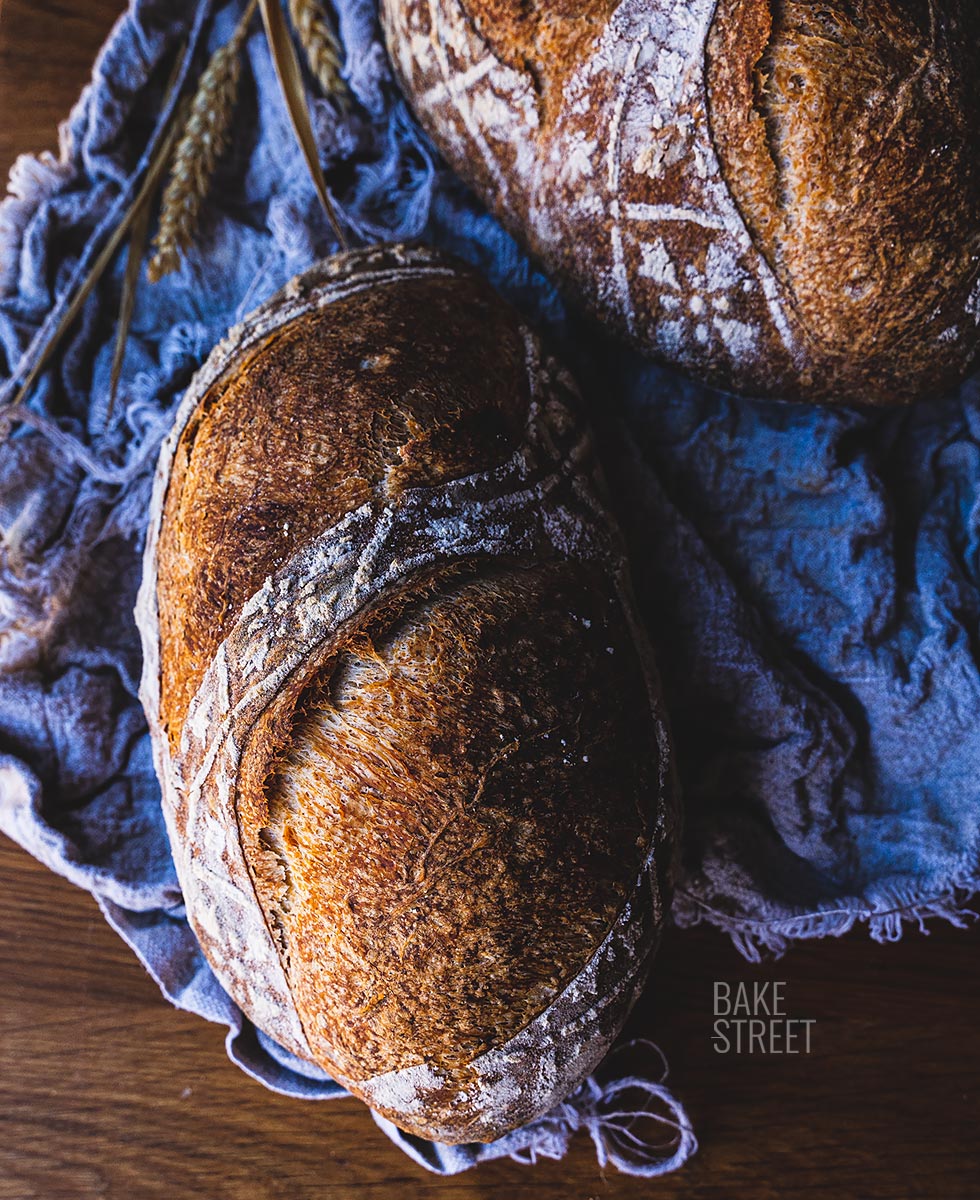
If the recipe uses 600 g of flour, we must calculate 20-30% (whatever we prefer to use) to know the amount of preferment we are going to add to the dough. Once we have that amount calculated, we have to subtract the amount of water and flour that is in the dough. Why? Because we are going to replace that amount of water and flour in the final recipe with a preferment.
So now what we have to take into account is the hydration of that preferment. If, for example, we add a 100% hydrated preferment, that means that it has the same amount of water as flour. If we add a 30% preferment to 600 g of flour, that means that we will use 180 g (90 g of water + 90 g of flour). These two quantities must be subtracted from the final dough.
How is it done?
If the bread dough we are going to make has 600 g of flour, 400 g of water, X g of yeast and 10.8 g of salt, by adding the preferment the formula will look like this;
- 510 g flour
- 310 g water
- 180 g preferment
- 0 g yeast (unless we want to reinforce it a bit, but if it’s sourdough I recommend not adding anything)
- 10,8 g salt
Watch out for this last ingredient, salt. If we use sourdough, poolish, biga… Which are unsalted preferments, we shouldn’t modify anything. But, if we use old dough or pâte fermentée, we must remember that this preferment contains salt. So we have to take into account the amount of salt that we made to prepare it, calculate the amount that is in the portion that we are going to add and subtract, that amount of salt, from the final dough.
And if I want to do it the other way around, change yeast for sourdough or some other preferment?
The process is the same only in reverse. If we remove from a dough 180 g of 100% hydrated sourdough, for example. In that case we must add to the final dough 90 g of flour + 90 g of water. Since these two ingredients were part of the final dough only added as a preferment.
Okay, and how much yeast should I add? I recommend that you never add more than 2% yeast in relation to the final weight. Be careful here, we must take into account the flour of the preferment/sourdough. If it can be less, better.
The only thing that will influence is the final fermentation time, we will have to wait a little longer. But if you use a lot of yeast, the bread will rise at the speed of lightning, but in return it will also dry/harden at the same speed. If you put on a scale in the time and effort used to do so, you will see that it does not compensate for ‘spoiling’ a dough just by wanting it to rise faster.
From now on you have no excuse for making bread, you can convert in one way or another that dough you want to make at home 😉

Recipe bread with old dough
Ingredients for 2 breads, 500 g
FOR THE DOUGH:
- 528 g Multicereali flour or strong flour
- 376 g water
- 120 g pâte fermentée (recipe below)
- 0,7 g dry yeast
- 9,4 g salt
FOR PÂTE FERMENTÉE (72 hours in the fridge):
- 75 g bread flour
- 50 g water
- 0,25 g dry yeast
- 1,3 g salt
Instructions
FIRST DAY
Make pâte fermentée.
- In the KitchenAid bowl, or we can mix everything by hand, add all the ingredients and mix with the hook at speed 1.
- You should not develop gluten or do intensive kneading, just mix until no dry ingredients remain.
- Cover the bowl with a shower cap or film and leave it to stand for 10-12 hours at room temperature. In my case 70.7ºF/21.5ºC.
- Refrigerate for 72 hours.
- In summer we do it differently. Once we mix the ingredients, we let it stand at room temperature until it grows 1/3 of its volume and we refrigerate it until the moment of use.
72 HOURS AFTER MAKING THE PÂTE FERMENTÉE
Make the dough for bread with old dough.
- In a large bowl add the flour with the water, mix and make an autolysis of 2 hours.
- After this time, we add 120 g of pâte fermentée along with the yeast. Mix until you get a homogeneous dough.
- Add the salt and mix again until it integrates.
- Knead, combining kneading with resting (remember to cover the dough always at this point), until a perfect development of gluten.
- Once the dough is perfectly developed, put it into a container previously greased with oil and make bulk fermentation.
Bulk fermentation.
- Leave it at room temperature until it grows 1/3 of its volume. In my case it was 3 hours at 73.4ºF/23ºC, in which I made 2 folds every 60 minutes.
- Refrigerate until the next day. In my case it was 17 hours at 39ºF/4°C.

Divide and shape.
- Remove the dough out of the fridge and temper it for 2 hours at 23ºC. The dough should grow more than double, in my case I let it triple its volume.
- Turn out the dough on a slightly floured surface and divide the dough into two equal pieces, weighing about 515 g each.
- Preshape very gently, cover and leave to rest for 15 minutes.
- Shape into a batard. In this video I show you how to shape batards.
- Place on a linen, previously sprinkled with flour.
- Repeat the same process with the other piece and place it on the linen. To separate both pieces, we will create a fold with the linen.
- Cover with the linen.
- Let it ferment for 60 minutes at 77.9ºF/25.5ºC. Remember that the final time of fermentation will be marked by the outside temperature. Especially now that the temperature is starting to rise.
Bake.
- Preheat the oven to 445ºF/230ºC.
- Place the tray, stone or steel plate in the lowest part of the oven and a container/tray with volcanic stones that we will place inside since we turn on the oven, this way they will also take temperature. We can place them under the plate that we bake or just on one side of it, leaving space for the bread. The ideal is to preheat from 30 to 40 minutes before.
- Five minutes before placing the bread in the oven, heat water (a little more than half a cup), we can do it in the microwave.
- Put the bread on a wooden board lined with baking paper. To move the piece we can help us with a scraper.
- In my case I decided to decorate the surface with a template and sprinkling flour. This is a purely decorative step and can be omitted.
- With the help of a lame, make two parallel cuts, similar to those we would make on a baguette or this bread.
- We can moisten the blade to help it slide well into the dough.
- Place the bread in the oven helping us with the wooden board (sliding the bread on the steel) and pour boiling water on the tray with stones, close the door. We must try to do it as soon as possible so as not to lose the interior temperature of the oven.
- Bake for 10 minutes with heat only below and steam, we turn off the top resistance*. By turning off the heat at the top we favour the expansion of the bread and prevent the crust from sealing up prematurely. We will obtain a bread with great volume.
- After these first 10 minutes, open the door slightly to release all the steam from the inside, being very careful not to burn yourself, we take out the tray/container with stones and close the door again.
- Bake for 15 minutes more to 428ºF/220ºC with heat up and down. Reduce to 374ºF/190ºC and leave for 5 more minutes. Put convection to 374ºF/190ºC and finish baking with another 5 minutes.
- Take the breads out of the oven and let it cool completely on a rack before cutting them.

Notes
- Pâte fermentée, in the summer, will rise much faster. I advise you to leave it at room temperature until it has grown by 1/3 of its volume and then refrigerate it until the next day. Before using it for baking, we should temper it for 1-2 hours.
- The amount of yeast we use may not seem much to you. But keep in mind that we are adding a lot of dough, previously fermented.
- Remember that for every gram of dry yeast, 3 g of fresh yeast are used. If you use the latter, you must increase the amount.
- The type of flour used to make this bread will condition the final hydration of the bread. In my case I have used a flour with a strength W=290, but if we use one weaker, you must reduce the final hydration.
- It can be kept in perfect condition for 2-3 days wrapped in film or in a zip-lock bag. Although the ideal is to consume it during the day.
- It can be frozen, sliced, and defrosted in the toaster.

I hope you liked this post about How to make bread with old dough. A new way of making bread at home to take into account and, above all, to take advantage of the preferement leftovers or dough that we may have from other elaborations.
Thanks to the use of old dough, we get breads with an incredible taste and aroma. In addition to an interior structure in its crumb quite attractive. Not the same as if we use sourdough, but the result is quite good.
I have left you a different format, some 500 g loaves, but you can give it the shape you like best; boule, batard, rolls, loaves... The format that best suits your tastes and / or needs ;)
I wish you a happy midweek!
Big hugs,
Eva
